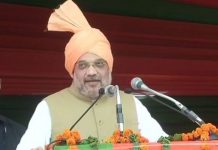
There is one side of the coin. This projects a negative image of a near future where NDA-2 struggles and trips to get several critical reforms passed in the Rajya Sabha. Since the government doesn’t have the requisite numbers in the Upper House and can’t increase them after the dismal defeat in Bihar, the situation will worsen. Therefore, it is goodbye to reforms for now, so think the stock investors, currency traders, economists and the business community.
Then there is the other side of the coin. It shows a positive image. Finance Minister Arun Jaitley said that Bihar was neither a referendum on Prime Minister Narendra Modi nor will it impact the pace of economic reforms. Credit rating agency Fitch claimed that it won’t change the medium-term growth outlook for India because of the Bihar debacle. Several stock market analysts feel that NDA-2 will now talk to the political Opposition to arrive at a consensus on reforms.
Amid these contradictory views, there is talk that the forthcoming winter session of Parliament will be a washout, like the previous monsoon one. The regime will be forced to adopt extra-parliamentary strategies to push through policies, just like it did in the case of the land acquisition Bill where the states were asked to formulate their own laws.
And, come February, the regime could pull off a ‘big bang’ Budget to boost investor sentiment.
Unfortunately, all these perceptions and doubts are based on half-truths and myths. For the sake of simplicity, we shall refer to both as myths given the aggressive and convincing manner in which the half-truths are propagated. Each side uses the data and analysis that suit their conclusions. No one has delved into them in an objective manner. So let’s bust those myths.
MYTH # 1 DOWN AND OUT IN RAJYA SABHA
Within the BJP and its allies, there was a feeling that despite the defeat in the Delhi Assembly election, if they could ride the victory momentum in Jammu & Kashmir and Jharkhand to win in Bihar, this would translate into huge numbers in the future state elections. Thus, the BJP and its allies were expecting to do better in Assam and Tamil Nadu (with the AIADMK) in 2016, Uttar Pradesh, Uttarakhand and Himachal Pradesh in 2017, and Karnataka in 2018. In addition, they would have got a few seats even in Kerala (2016) and West Bengal (2016).
According to niticentral.com, a Right-leaning website, NDA-2 was expected to do well in all the Assembly elections between 2016 and 2018, except in Bihar, where status quo would be maintained. If the predictions turned out to be true, NDA-2 would have got a majority in the Rajya Sabha, thanks to allies like AIADMK and the Odisha-based BJD (though Chief Minister Naveen Patnaik hasn’t supported the BJP unilaterally), besides the nominated members. (Rajya Sabha members are chosen by the Assemblies, so a party that has more legislators across a greater number of states has a bigger chance of electing more members to the Upper House.)
Contrary to this analysis, Aniruddha Sethi claimed that the road ahead won’t be so smooth for the BJP. His calculations showed that NDA-2 “will have a tally of 94 (in the Rajya Sabha) by the end of the term. If one adds the 11 Nominated members, the NDA will have 105 members working for it. The majority needed for the NDA in the Rajya Sabha is 123. Even at the end of the term, with all its sympathetic independents and nominated members, the NDA will still not have a majority.” This, he added, was in the case of “a hilariously optimistic prediction” in the Assembly elections.
However, all these figures will need to be recalculated now. Because political experts now contend that the Bihar defeat will put a brake on NDA-2’s political acceleration in the forthcoming Assembly elections, especially in states such as Uttar Pradesh. Therefore, its strength in the Rajya Sabha, by 2018 or 2019, may be lower than the estimations by Sethi. But what does this mean for Modi’s ability to push through critical legislations in Parliament over the next few years?
Intuitively, one might sense that although NDA-2’s numbers may increase in the Upper House, the logjam with the Opposition would continue. But it is not a completely lost case. Remember that the Congress, which has the largest numbers in the Rajya Sabha, will continue to lose out in the future. Its numbers will drop consistently because of defeats in several Assembly elections already, and its inability to win future ones. The caveat, though, is that the Congress’ fortunes can swing positively since it did quite well in Bihar.













